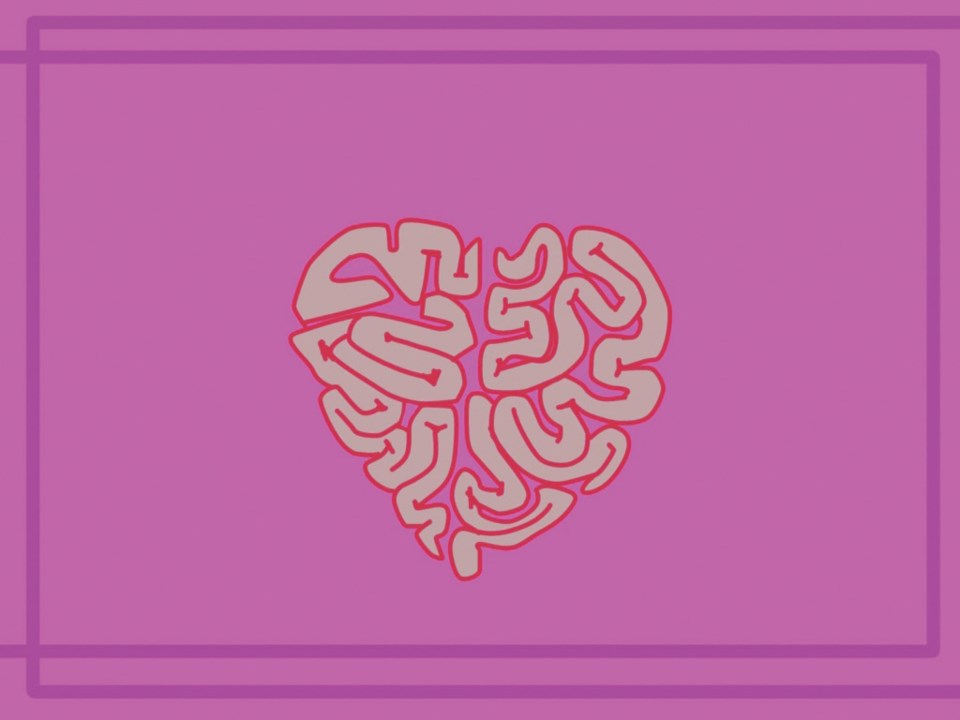I have been thinking about art and love in the last month or so – what they are and what they can do to lift our wings and, perhaps, elevate mental health and stay the storms that buffet our mental health.
The immediate cause of these questions has been a recent art exhibit and series of open-stage evenings at the Gibsons Public Art Gallery (GPAG). This weeks-long experience was conceived and curated by Janice Williams (who many readers will know) and organized by a team of gallery volunteers and friends – not least photojournalist extraordinaire Paul Clancy, who recorded every minute, and co-sponsored by Dr. Lorne Berman, who is a pretty decent photographer in his own right.
So, you ask, what’s love got to do with it? A mere art show.
A lot.
During the performance events – which packed GPAG to the rafters – speakers and readers and singers and performers in many cases mentioned the love they felt in the room and in the arts community, and how that deep emotion and the feeling of freedom to express and be accepted variously helped soothe senses of unworthiness, unhappiness, depression, anxiety, and loss of purpose.
So, what is love in this context? The great poets have written about love and, in one of the many wondrous journeys of human emotion and existential gesture (like space travel), continue to debate this.
There are two relevant quotes I like.
“Love is not only something you feel, it is something you do.” A guy named David Wilkerson said that.
“When someone else’s happiness is your happiness, that is love.” Those words come from Lana Del Ray.
These ideas intersect.
Love is something “we do.” And when we do something from our soul that makes someone happy, we are doubly blessed.
Now, as readers of this column know, I like to ladle my ideas with a bit of clinical gravy. Without dimming the love glow, here goes.
Social and personal isolation are factors (not including familial genetics) most important as predisposing causative agents in depression and anxiety.
Furthermore, therapy that encourages greater social integration and personal involvement in community has proven incredibly effective in the treatment of endogenous depression. A sense of safety, security and stability are key.
How are these effects measured? Usually by anecdote. Here’s an example.
For a few years, a couple of enlightened local mental health workers put on an art show in Sechelt featuring the work of mental health clients – a show joined by a concurrent art program at the Arrowhead Clubhouse. There was a subsequent auction in the Trail Bay Mall of art created by Arrowhead members. The Clubhouse made nearly $800.
But far greater than profit was the sense among our artists of acceptance, validation, appreciation, and inclusion. And this has led, in the intervening years, to remarkable progress among these artists in living independently, with greater happiness and self-esteem – even in the face of often-dire mental illness.
We are social creatures.
It is in our genes the need to touch, to hold, to have a sense of belonging. To love and be loved. To be stable, and to have trusting relationships. To have hope. To have faith that our expression will be accepted and given as true. To go to bed tonight knowing that tomorrow we will awaken with the same social acceptance we thought we had today. That if we are “out there,” then we will be understood and be “within.”
Art and love bring these essential needs and wants together.
The recent GPAG show was quite incredible.
The “Off The Wall” displays on the gallery walls were wondrous in their variety, which in itself was amazing – art by some of the Coast’s (and world’s) most amazing creators and mature artists, as well as folks new to public expression. But it was the bravery of artists and speakers to share their private inspirations and reasons for “why I do what I do” that was most inspiring.
And it was the love and acceptance among the 100 or so folks that regularly trouped down to GPAG on five rainy nights to listen to and experience some very strange and wonderful verbal/musical/physical expressions of self and vulnerability that made the show special – and possible.



